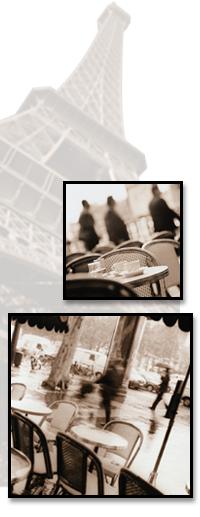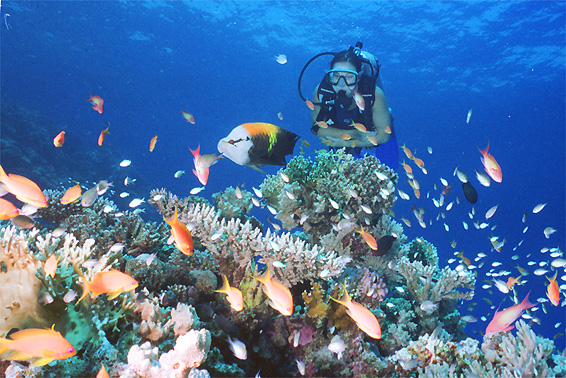
Puerto Galera

Boracay Island
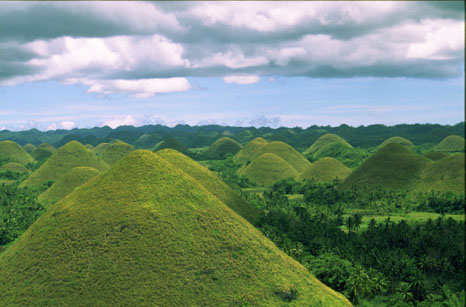
Bohol Chocolate Hills

World's smallest monkey
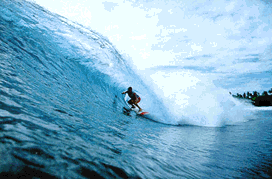
Siargao Island
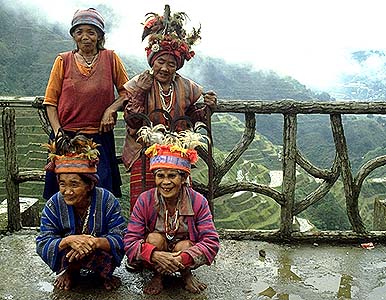
Ifugao Tribe
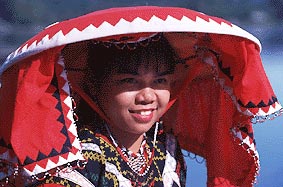
Tiboli Tribe
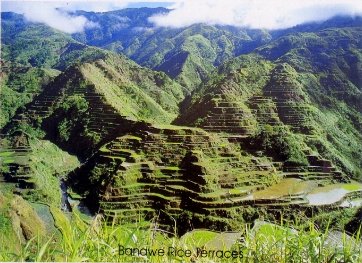
Banaue Rice Terraces
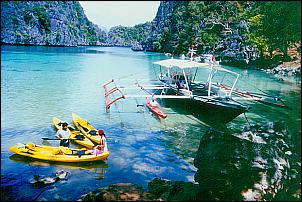
Palawan Coron Bay
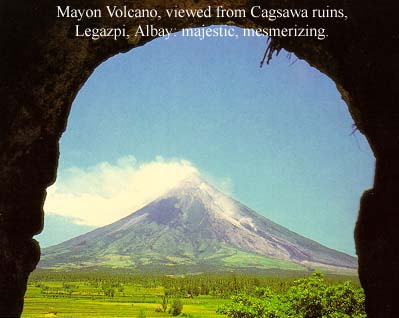
Mayon Volcano
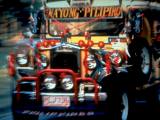
Philippine Jeepney
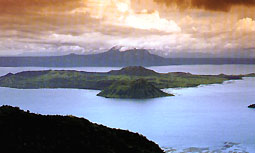
Batangas Taal Volcano
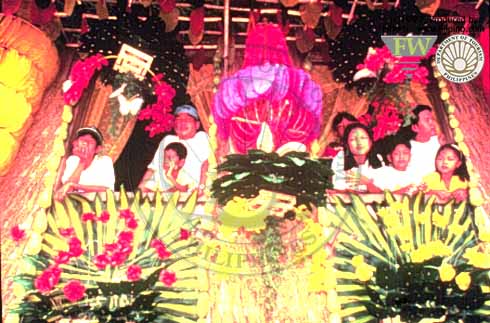
Pahiyas Festival
|
|
THE PHILIPPINES
Pearl of the Orient
Background
The Philippines were ceded by Spain to the
US in 1898 following the Spanish-American War. They attained their independence in 1946 after being occupied by the Japanese
in World War II. The 21-year rule of Ferdinand MARCOS ended in 1986 when a widespread popular rebellion forced him into exile.
In 1992, the US closed down its last military bases on the islands. The Philippines has had two electoral presidential transitions
since Marcos' removal by "people power." In January 2001, the Supreme Court declared Joseph ESTRADA unable to rule in view
of mass resignations from his government and administered the oath of office to Vice President Gloria MACAPAGAL-ARROYO as
his constitutional successor. The government continues to struggle with ongoing Muslim insurgencies in the south.
THE
PHILIPPINES stands at the crossroads of the developed western world and the Orient. It lies in the heart of Southeast Asia,
stretching more than 1,840 kilometers. Composed of 7,107 islands, the Philippines is readily accessible to the different capitals
of the world. Its three main islands are Luzon, Visayas and Mindanao. The South China Sea washes its western shores. Taiwan,
China and Hong Kong are northern neighbors and further north is Japan. To the west lie Southeast Asian countries such as Singapore,
Malaysia and Thailand. An arm of the archipelago reaches out towards Borneo and at its feet stands the chain of Indonesian
islands. To the east and south, the waters of the Pacific Ocean sweep its headlands, looking out towards Micronesia and Polynesia.
Its unique location has made the Philippines the commercial, cultural and intellectual hub of Asia from the dawn of history.
Provinces and Cities
73 provinces and 61 chartered cities*; Abra, Agusan del Norte, Agusan del Sur, Aklan,
Albay, Angeles*, Antique, Aurora, Bacolod*, Bago*, Baguio*, Bais*, Basilan, Basilan City*, Bataan, Batanes, Batangas, Batangas
City*, Benguet, Bohol, Bukidnon, Bulacan, Butuan*, Cabanatuan*, Cadiz*, Cagayan, Cagayan de Oro*, Calbayog*, Caloocan*, Camarines
Norte, Camarines Sur, Camiguin, Canlaon*, Capiz, Catanduanes, Cavite, Cavite City*, Cebu, Cebu City*, Cotabato*, Dagupan*,
Danao*, Dapitan*, Davao City* Davao, Davao del Sur, Davao Oriental, Dipolog*, Dumaguete*, Eastern Samar, General Santos*,
Gingoog*, Ifugao, Iligan*, Ilocos Norte, Ilocos Sur, Iloilo, Iloilo City*, Iriga*, Isabela, Kalinga-Apayao, La Carlota*, Laguna,
Lanao del Norte, Lanao del Sur, Laoag*, Lapu-Lapu*, La Union, Legaspi*, Leyte, Lipa*, Lucena*, Maguindanao, Mandaue*, Manila*,
Marawi*, Marinduque, Masbate, Mindoro Occidental, Mindoro Oriental, Misamis Occidental, Misamis Oriental, Mountain, Naga*,
Negros Occidental, Negros Oriental, North Cotabato, Northern Samar, Nueva Ecija, Nueva Vizcaya, Olongapo*, Ormoc*, Oroquieta*,
Ozamis*, Pagadian*, Palawan, Palayan*, Pampanga, Pangasinan, Pasay*, Puerto Princesa*, Quezon, Quezon City*, Quirino, Rizal,
Romblon, Roxas*, Samar, San Carlos* (in Negros Occidental), San Carlos* (in Pangasinan), San Jose*, San Pablo*, Silay*, Siquijor,
Sorsogon, South Cotabato, Southern Leyte, Sultan Kudarat, Sulu, Surigao*, Surigao del Norte, Surigao del Sur, Tacloban*, Tagaytay*,
Tagbilaran*, Tangub*, Tarlac, Tawitawi, Toledo*, Trece Martires*, Zambales, Zamboanga*, Zamboanga del Norte, Zamboanga del
Sur
Economy
In 1998 the Philippine economy - a mixture of agriculture, light industry, and supporting services
- deteriorated as a result of spillover from the Asian financial crisis and poor weather conditions. Growth fell to about
-0.5% in 1998 from 5% in 1997, but recovered to about 3% in 1999 and 3.6% in 2000. The government has promised to continue
its economic reforms to help the Philippines match the pace of development in the newly industrialized countries of East Asia.
The strategy includes improving infrastructure, overhauling the tax system to bolster government revenues, moving toward further
deregulation and privatization of the economy, and increasing trade integration with the region.
Climate
March
to May is hot and dry, with temperatures ranging from 22° to 32°C. June to October is rainy. November to February is cool;
temperatures range from 22° to 28°C. Average humidity year-round is 77%.
Ethnic Groups
91.5% Christian Malay,
4% Muslim Malay ,1.5% Chinese and 3% other.
Languages
The national language is Pilipino, which is based
on the language of Tagalog, although there are at least one or two dialects spoken in every region. English is both spoken
and understood throughout the country, especially in business negotiations and in the government. Hokkien, Cantonese and Mandarin
are spoken by older members of the Filipino-Chinese community.
Religion
83% Roman Catholic, 9% Protestant,
5% Muslim, 3% Buddhist and other.
The Philippines in the World
THE PHILIPPINES is readily accessible from
the travel capitals of the world. Traveling time to Manila from Hong Kong is an hour and 50 minutes; Singapore, 3 hours and
10 minutes; Bangkok, 3 hours and 50 minutes; Tokyo, 4 hours and 15 minutes; Sydney, 10 hours and 20 minutes; London, 20 hours
and 45 minutes; Paris, 21 hours and 15 minutes; Frankfurt, 19 hours and 40 minutes; San Francisco, 16 hours and 15 minutes;
Los Angeles, 15 hours and 20 minutes; and New York, 25 hours and 20 minutes.
Wealth of Wonders
The Worlds
Smallest Monkey
The Worlds Smallest Banana
The Worlds Best Beaches
The Banaue Rice Terraces
The Worlds Smallest
Bat
The Worlds Best Diving Destinations |
